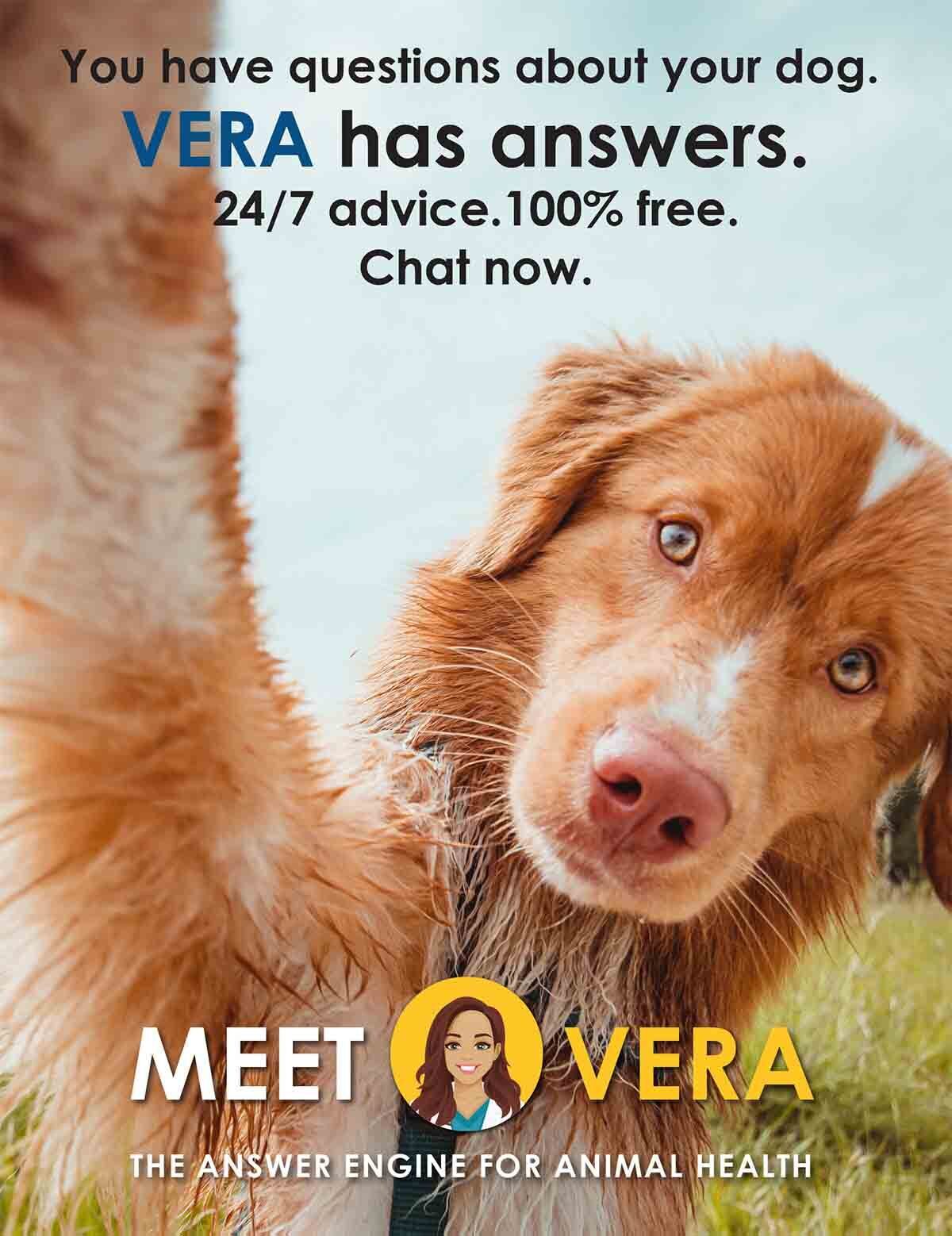Service dogs take the saying, “A man’s best friend,” to the next level. They are a necessary and essential part of many people’s lives, helping those with disabilities and medical conditions. In general, dogs are great workers and companions and can help lower stress levels, increase physical activity, and boost morale.
Training a dog to be a service dog takes hard work and lots of practice, but it is possible! Due to the high demand, there are some puppies that are born with service dog training in mind, so if you aren’t able to train your own, you can often find a service that matches you with an already-trained service dog.
To learn more about service dogs and how to train them to help you, keep reading!
What Is a Service Dog?
Service dogs are companions and helpers to people with disabilities, assisting them so that they can live more independent lives. A person’s service dog will be trained to perform specific tasks that help that individual with their daily life. The tasks that are taught to that dog are directly related to that person’s disability.
Common service dog tasks might be related to those who are blind or visually impaired, have difficulty hearing, have mobility issues, have psychiatric conditions, such as PTSD, or need to be notified about the onset of a medical issue such as low blood sugar or seizures. There are so many services that a service dog can provide!
Some types of service dogs are:
- Psychiatric service dogs
- Mobility service dogs
- Visual impairment service dogs
- Medical alert service dogs
Service dogs are considered by the Americans with Disabilities Act (ADA) as working dogs and aren’t technically considered pets. This allows them public access to any environment or building and gives them certain protections against discrimination.
What Is Not a Service Dog?
Service animals are different from emotional support dogs and therapy dogs:
Service dogs are trained specifically to do at least two tasks to help with a disability. On the other hand, emotional support animals (ESAs) can be any type of animal, including rabbits and snakes. These animals might help us through a panic attack by silently supporting us, but only a service dog would know to offer trained responses like deep pressure therapy.
Therapy dogs are dogs trained to go into hospitals, libraries, schools, or other venues to offer emotional support to the people there. Typically, a therapy dog needs to pass a therapy dog test similar to the AKC Canine Good Citizen test.
Our canine companions improve our quality of life no matter what, and obedience training is always essential!
Common Service Dog Breeds
Any dog can be a service dog if they are able to complete the set of tasks they’re required to. There isn’t a requirement for your dog to be any certain breed, but you may want to consider what you need your dog to do before settling on a breed. For instance, smaller breeds may not be great for guide dogs or to help perform tasks requiring mobility assistance but could be fabulous alert dogs or something along those lines.
The three most common service dog breeds that you will come across are German Shepherd Dogs, Golden Retrievers, and Labrador Retrievers. This is because these dogs are of good size and strength, are extremely intelligent and trainable, and bond deeply with their humans. They like to be given a task and are already protective of their humans to the point where they want to help them.
Other breeds that are known to make great service dogs are:
- Poodles (Toy, Mini, and Standard)
- Border Collie
- Bernese Mountain Dogs
- Pomeranians
- American Staffordshire Terriers
- English Setters
How To Find the Best Service Dog for You
Some people don’t have the ability or time to train their own service dog, and that’s okay! There are plenty of training programs out there that breed and train service dogs so that you don’t have to.
In these programs, the people training the dogs check to ensure they have a good temperament, are sociable, are in good health, and are trainable. Often, there are very long waiting lists for obtaining one of these already-trained service dogs.
When you adopt or go to a reputable breeder and are matched with a dog from one of these programs, your needs are taken into consideration, and you usually meet with the different dogs available first. This helps you to form connections with potential matches and see which one is the best fit.
Training Your Own Service Dog
Now, you may have a dog at home you love and want to make into your service dog. Maybe they already perform some basic obedience tasks for you, and you think they may be a strong candidate for training.
If that’s the case, you can give it a try! Especially if you already have a relationship and have built trust with this dog, it may make the training process easier and more fun.
1. Is Your Dog a Good Fit?
Before starting the training, be sure your dog is a good candidate for a service dog training program. Are they alert and easily trainable? Does your dog get distracted easily or too excitable?
Do they have any behavioral obstacles such as reactivity in public or have fear issues? Overall, what is your dog’s temperament, and have you witnessed them in a variety of different situations?
Not all dogs are meant to be service dogs, and that’s okay!
2. Go Through the Basics
When you’ve decided that your dog is ready, start with the basics. This can set the stage for how the rest of your training will go. If your pup picks up on tasks easily and shows signs of being interested, that’s a great sign. Future service dogs must be socialized with people and other dogs, as well as cats, if possible.
Ensuring that they can behave on the leash and walk without interruption or disruption is a sign that they will make for an attentive service companion. Additionally, they should be well-behaved off-leash and never run off or stray from your commands.
3. Test Their Attentiveness
The next step is practicing eye contact. You don’t want your dog to be easily distracted. Maintaining eye contact with you is a great sign for a successful service dog. Train them to keep their eye on you a lot of the time so that they don’t miss a command from you.
Practice this by bringing a bunch of different distractions to your dog. This could be another person, a dog, a couple of toys, and a really enticing treat. Work with your dog to ensure they know you are the most important thing to them, and only when you give them the command to go see the distraction are they allowed to.
4. Expose Them To New Places
Service dogs need to be exposed to new places so they don’t become easily overwhelmed. They need to learn how to adapt and stay focused no matter where they are. Bringing your dog to public places that you frequent is a good way of exposing them to new places and getting them comfortable. This way, they will be prepared when they arrive at a location they’ve been to before.
Service dogs in training are allowed in all the public spaces where fully-trained service dogs are. While the ADA grants service animals access, there are a few exceptions. For instance, some animal sanctuaries or zoos do not permit service animals to enter the premises or certain areas (like open-air topiaries or carnivore enclosures).
You could end up in any kind of environment; your dog should be prepared as well. That way, there are no surprises when you take your dog to a busy shopping mall or to a concert venue.
5. Determine Their Tasks
Lastly, when training a service dog, determine what tasks you’d benefit from. This knowledge helps you focus on specializing your dog’s abilities and making sure they perform tasks that are useful to you. If you are someone with a mobility disability, making sure your assistance dog can open doors, reach light switches, retrieve items, and assist you as you move around is essential.

Training Your Dog With a Helping Paw
As you continue to train your service dog, you may find yourself coming up with questions you can’t answer. When you sign-up with AskVet, you gain access to Certified Pet Coaches who can provide you with support and advice on the training process. They can recommend certain resources to you that will be helpful and connect you with behaviorists that can help you understand your dog’s actions and responses.
Sign-up today for a virtual consultation about what AskVet can offer you. You’ll find that having this additional resource does wonders during your training sessions, so don’t wait another day!
Sources:
How to Stay Healthy Around Pets and Other Animals | CDC
ADA Requirements: Service Animals | ADA
Enhancing the Selection and Performance of Working Dogs | Frontiers
Mobility And Medical Service Dogs: A Qualitative Analysis Of Expectations And Experiences | NCBI





